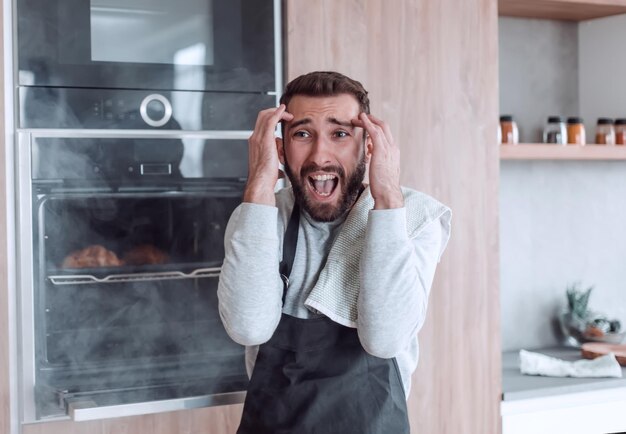Why Isn't My Refrigerator Cooling? Here's What You Need to Know!
We've all been there. You open your refrigerator for a refreshing drink or snack, only to discover a warm mess inside. Your refrigerator is on and humming, but the cooling seems to have taken a vacation. But don't worry, you're not alone. This is a common issue, and there are several potential reasons and solutions. Let's explore why your refrigerator might be running but not cooling and what you can do about it.
Understanding How Refrigerators Work
Before diving into troubleshooting, it’s helpful to understand the basics of how refrigerators function. Refrigerators use a complex interplay of components to keep food cool:
- Compressor: The heart of the cooling cycle, it pumps refrigerant gas into the system.
- Condenser Coils: These disperse heat from the refrigerant.
- Evaporator Coils: Located inside, these absorb heat from the refrigerator's interior.
- Thermostat: Regulates the internal temperature by controlling the cooling process.
Understanding these components is the first step in diagnosing any issues with your refrigerator.
Common Reasons for a Refrigerator Running but Not Cooling
1. Dirty Condenser Coils
Condenser coils need to be clean to efficiently release heat. Over time, dust and dirt can accumulate, reducing their effectiveness.
Solution: Check the condenser coils, typically found at the back or bottom of the refrigerator. Clean them with a vacuum or brush to ensure optimal airflow.
2. Faulty Evaporator Fan
The evaporator fan circulates air inside the refrigerator, ensuring even cooling. If it's not working, cold air can’t circulate properly.
Solution: Listen for unusual noises when the door is closed. If the evaporator fan is the culprit, it may need to be repaired or replaced.
3. Broken Temperature Control Thermostat
If the thermostat is malfunctioning, it might not signal the compressor and fan to cool the interior.
Solution: Test the thermostat by adjusting it and listening for a click sound, indicating it's working. A professional can verify its functionality if needed.
4. Malfunctioning Thermistor
The thermistor monitors the refrigerator's temperature and relays this to the control board. If it’s defective, the cooling process might be impeded.
Solution: A technician should test the thermistor's resistance to ensure it changes with temperature fluctuations.
5. Defrost System Issues
A malfunctioning defrost system can lead to frost build-up, obstructing airflow inside the fridge.
Solution: Look for frost accumulation in the freezer. If present, consult a professional to check the defrost timer, heater, and thermostat.
6. Low Refrigerant Levels
Over time, refrigerant may slowly leak, affecting the cooling efficiency of the refrigerator.
Solution: Only a certified technician should check and refill refrigerant levels or repair leaks.
Additional Troubleshooting Steps
🛠️ Check Door Seals
A worn or damaged door seal allows warm air to enter, reducing cooling efficiency.
- Solution: Inspect door seals. Close a piece of paper in the door and see if it slides out easily. Replace if necessary.
⚡ Inspect Power Supply
Ensure your refrigerator is receiving adequate power. Faulty power sources can impact the compressor's ability to cool.
- Solution: Check if other appliances plugged into the same outlet are functioning. Test the circuit breaker.
🌡️ Verify Internal Settings
Sometimes, inadvertently changed settings can cause cooling issues.
- Solution: Ensure temperature settings are at recommended levels: around 37°F (3°C) for the fridge and 0°F (-18°C) for the freezer.
When to Call a Professional
While it's possible to troubleshoot some issues yourself, other problems require professional expertise. If you've ruled out the basic issues, or if complicated components like the compressor or refrigerant are involved, a technician's help is necessary.
Preventive Maintenance Tips
Avoid future headaches by routinely maintaining your refrigerator. Here’s how:
- Clean condenser coils twice a year.
- Inspect door seals regularly.
- Avoid overloading the refrigerator to ensure proper airflow.
- Check and reset temperature settings as seasons change.
Summary Table: Troubleshooting Steps & Tips
| Issue | Cause | Solution |
|---|---|---|
| Dirty Condenser Coils | Dust build-up | Clean coils regularly |
| Faulty Evaporator Fan | Fan not circulating air | Repair or replace fan |
| Broken Thermostat | Thermostat not regulating temperature | Test and replace if needed |
| Malfunctioning Thermistor | Incorrect temperature readings | Test resistance, replace if defective |
| Defrost System Failure | Frost accumulation blocking airflow | Check defrost components |
| Low Refrigerant Levels | Leak or insufficient refrigerant | Call a technician for refill |
| Damaged Door Seals | Warm air entering | Inspect and replace seals |
Key Takeaways
- Regular Maintenance: Keep your refrigerator running smoothly through regular cleaning and inspections.
- Professional Help: Know when to call a technician, especially for complex issues.
- Proactive Measures: Keep a thermometer inside your fridge to monitor and maintain the right temperature.
Closing Insights
Navigating through refrigerator problems can be daunting, but understanding the common issues and potential solutions can save you from unwanted surprises. Regular maintenance and timely troubleshooting not only ensure a longer lifespan for your appliance but also contribute to the overall efficiency and safety of your kitchen environment. Remember, when in doubt, reach out to a professional to avoid further complications. Here's to a cool and hassle-free kitchen experience!
